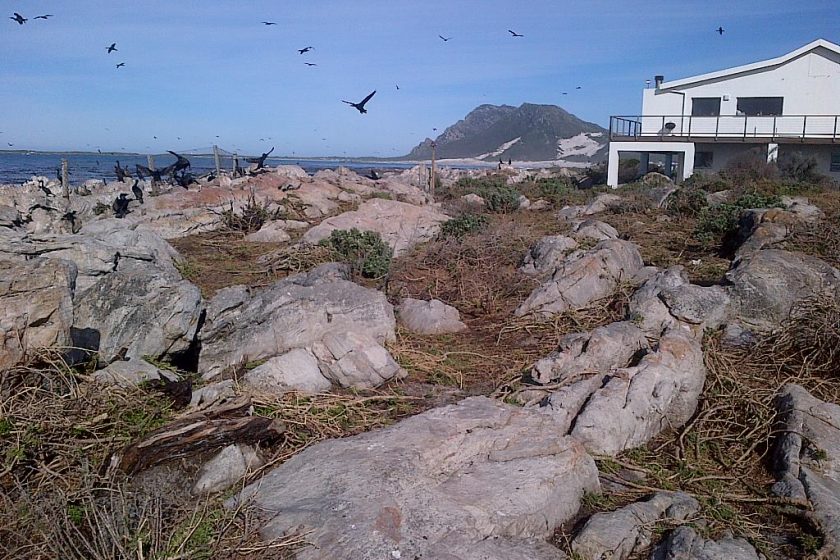Most people love nature and some even spend a fortune for the privilege of living close to it in a conserved area or at the beach. The tranquility and balance in nature are what we seek in today’s turbulent times, right?
But what happens if the balance in nature is disturbed due to human interference and the peaceful tranquility we craved becomes an intolerable plague that systematically destroys nature and poses an imminent health risk to all other species?
Residents at Stoney Point Nature Reserve, renowned for its large penguin colony and other rare, endangered bird species such as the Hartlaub’s Gulls, Kelp Gulls and three kinds of cormorant species, are in utter despair over the uncontrolled infiltration of bank cormorants on their doorstep.
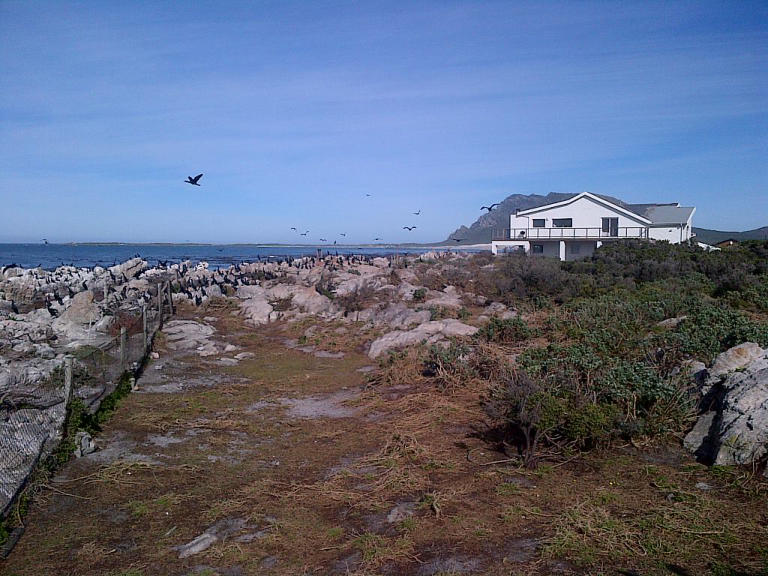
The above photo clearly shows the close proximity to the houses and the destruction of formerly beautiful fynbos gardens due to the bank cormorant invasion.
The stench, noise and destruction of natural vegetation in the area have become unbearable and they fear the consequences to their health and emotional well-being. Apart from the overpowering amoniac stink of the guano, it also attracts innumerous scores of flies, blowflies, mosquitoes and other pests to their homes, forcing them to live behind closed windows and doors, with curtains drawn in a futile attempt to block out the maddening, continuous noise, stench and insect plague.
What used to be heaven, has become sheer hell.
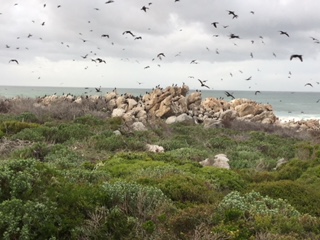
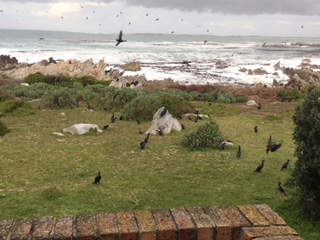
Long-term residents who have invested in this piece of paradise more than a decade ago, are now suddenly suffering from respiratory problems, allergies, headaches and ailments they never had before.
Doctors have attributed these symptoms directly to the escalating pollution caused by the feathers, guano and ear-piercing noise of the growing number of bank cormorants breeding and moulting on their doorsteps. According to long-term residents, there were very few cormorants when they initially came to live there more than a decade ago. Since Cape Nature put a fence up to keep visitors away from the penguins breeding on the rocky outcrops, the opportunistic bank cormorants started to move into the “protected area” and have since tripled in numbers, disturbing the natural balance and causing havoc to the environment and residents alike.
Numerous appeals over the past two years to the Overberg and Overstrand Municipality, Cape Nature and other authorities were met with shocking disregard, disrespect and disinterest. Permanent residents and owners of holiday homes in the area are now forced to consider selling their “dream homes” in order to flee from the unhealthy conditions, but due to the cormorant invasion the market value of their homes have dropped significantly.
The following letters of desperate home owners pretty much sums up the situation:
“We certainly have great worries re all the birds in front of our home.
Whilst they were breeding the flies were impossible to cope with. One could swot about six at a time with a fly swatter. I have these sticky strips hanging on the ceiling and they fill up every week and have to be replaced.
We even resorted to closing all the windows and running a fan for circulation. The stench is overpowering when the conditions blow it our way.
I did show a Cape Nature lady a fly trap I had outside. It was chock a block with flies after one week hanging outside my kitchen. Her response was that she didn’t ask the birds to be there.
Breathing in this foul air has caused us much distress and I am certain it certainly isn’t a healthy environment to be in.
To end with, what has the value of our properties dropped by? Everyone is gossiping about Stony Point and the awful situation we are all in.
PLEASE PLEASE can the birds be encouraged to go to a less inhabited area?”
A Holiday home owner wrote after their recent visit:
“Wat kan ons aan die kormorante doen? Hulle bly reg voor ons huis en dit het so gestink dat ons feitlik elke dag alles moes toehou. ‘n Verdere probleem was die brommers, dit het werklik ‘n probleem geword, in so ‘n mate dat mens wonder of ons die huis in die mark moet sit. Hierdie kormorante verlaag die waarde van ons eiendom ook. Het iemand dalk voorstelle?”
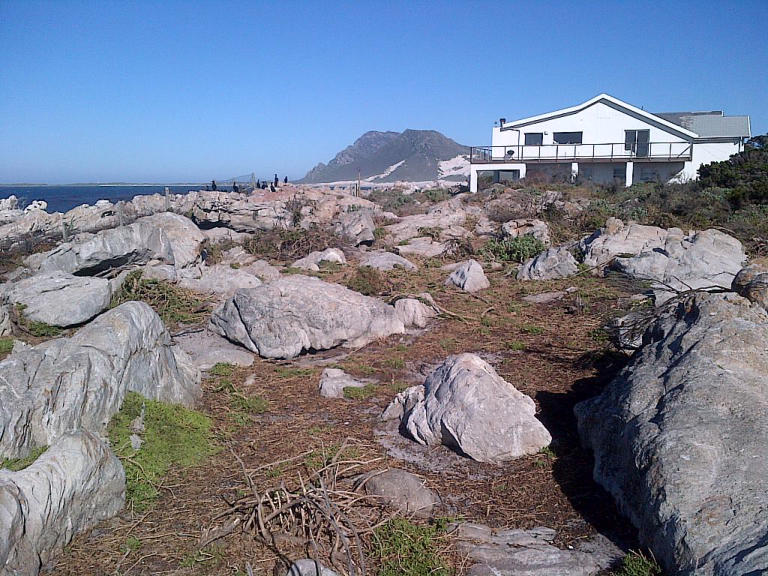
Mosselbayontheline encountered the same shocking ignorance and disinterest from Cape Nature when we tried to get some answers to the epic struggle. After sending them all the background and relevant documentation, we were referred to a Public Relations Officer who asked us to “limit our correspondence to specific questions.” (This after countless appeals, lengthy documentation and ongoing communication between Stony Point residents and Cape Nature re the problem over a two year period).
We summarized it into one (hopefully understandable) question addressing the most urgent matter and after waiting 10 days, received the underneath answer:
Mosselbayontheline: The cormorant problem at Stony Point is drastically affecting the health and well-being of long-term residents in the area. What can CapeNature do to help solve this ongoing problem?
Cape Nature PRO: “It is with great concern that we are informed of health effects experienced by residents around the Stony Point sea bird colony, allegedly due to the Cape cormorantPhalacrocorax capensis. To our knowledge no resident has come forward with either a medical certificate or allergy test result to confirm these allegations. The Cape cormorant is an endangered species and the overall population is declining in South Africa. The increase in the local population at Stony Point is good news for this species. The reason for the increase in numbers at this site is probably due, in part, to favourable environmental conditions, including available food. The Cape cormorant is a TOPS listed species, and any disturbance to these birds is illegal.”
Shocking photos revealing the total destruction of fynbos gardens and vegetation in the area due to the cormorant invasion were disregarded by Cape Nature as a “positive” since it lessened the fire risk in the area? See the document here:
https://email.mweb.co.za/service/home/~/?auth=co&loc=en_US&id=82318&part=3
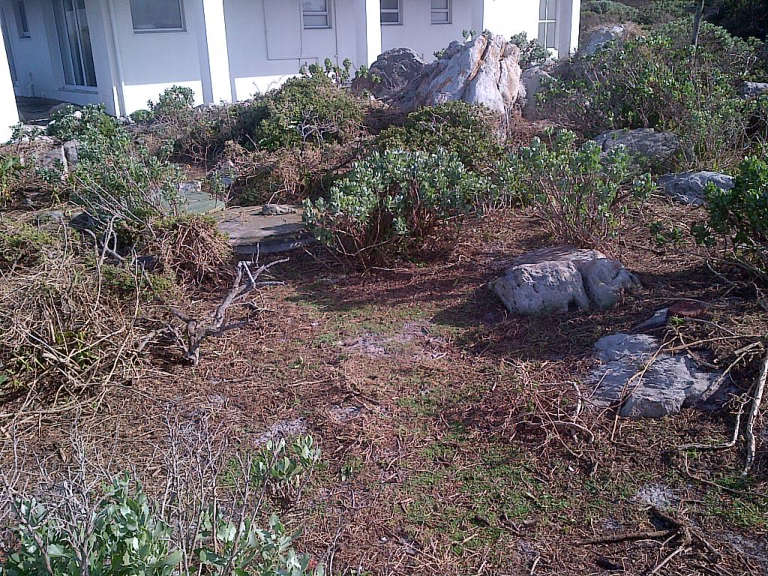

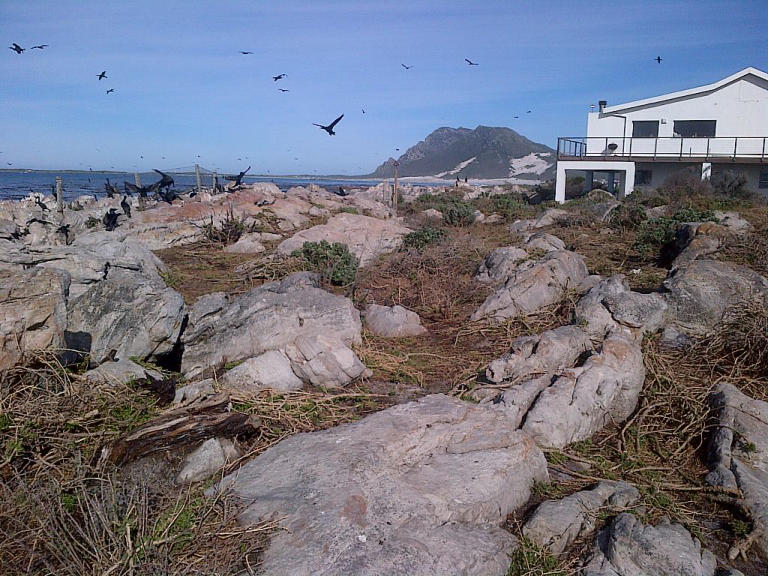
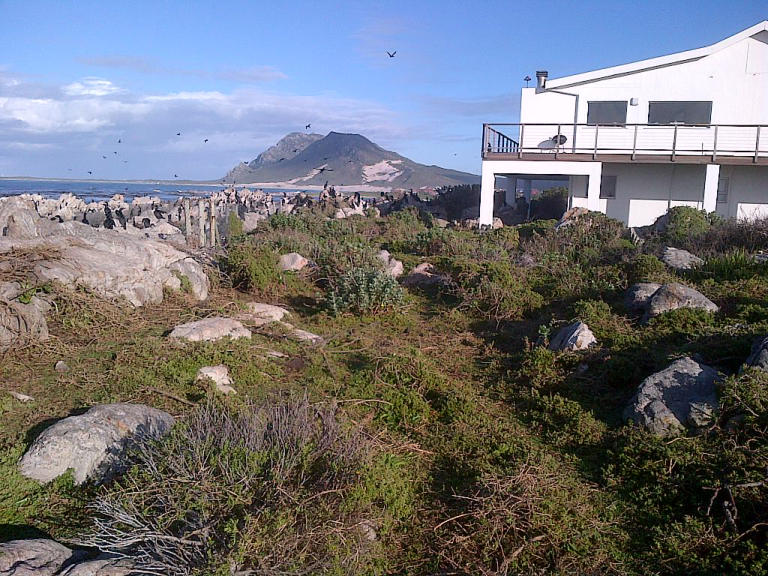
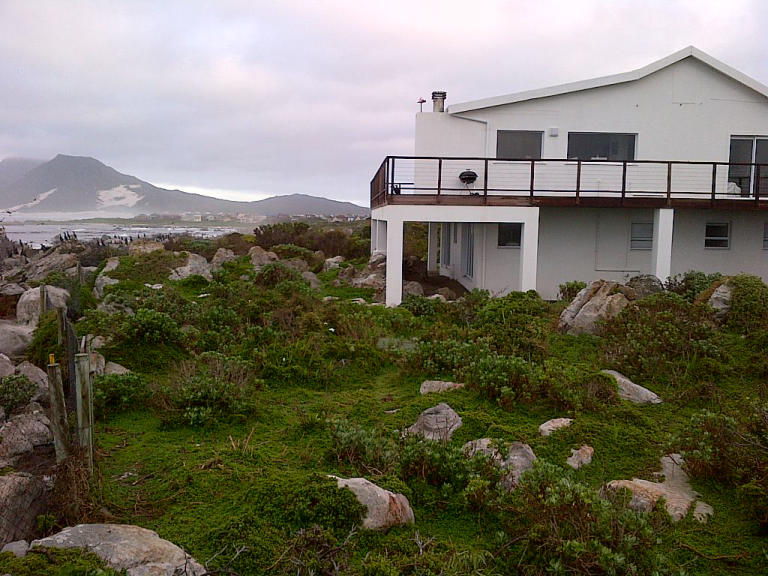
Despite the residents’ urgent appeals for help, Cape Nature turns a deaf ear and publishes the following “flowery” update of the “penguin sanctuary” which is actually a messy, muddy affêre on residents’ doorstep. Read it here:
https://email.mweb.co.za/service/home/~/?auth=co&loc=en_US&id=82316&part=2
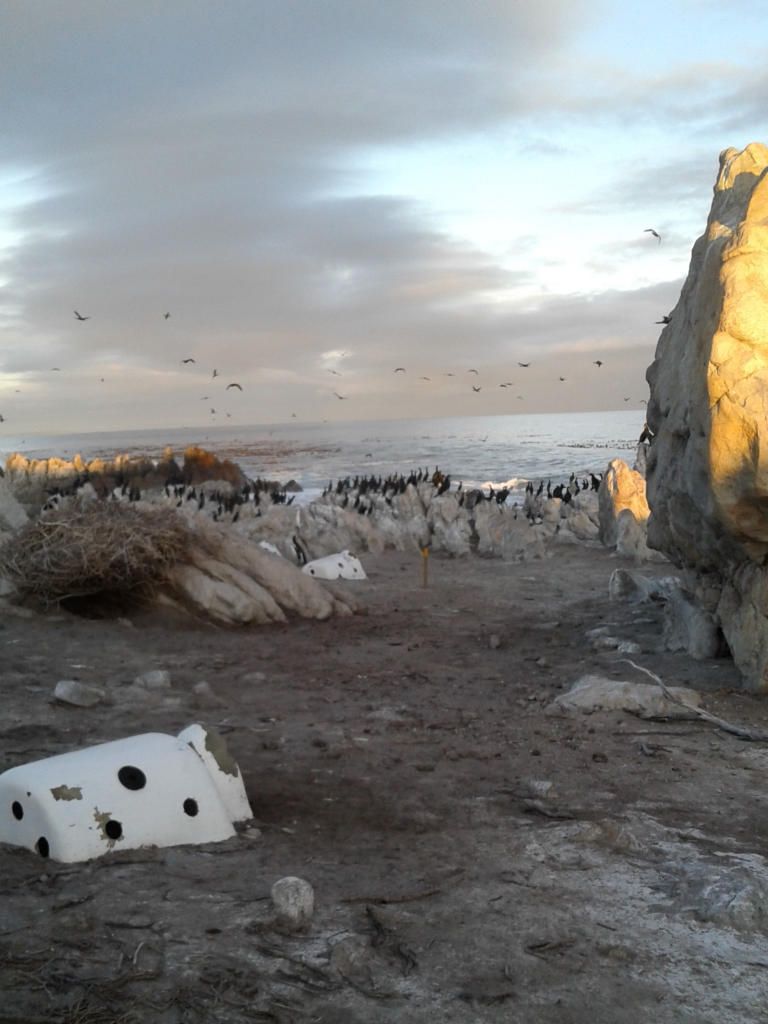
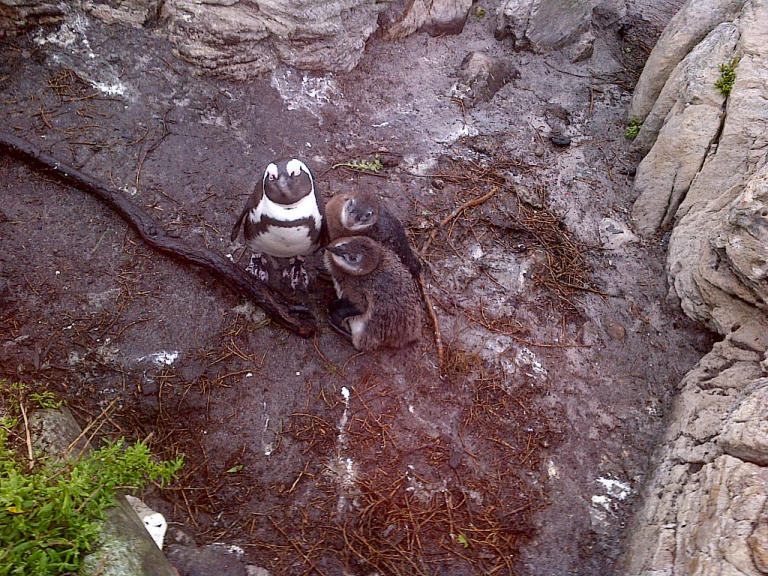
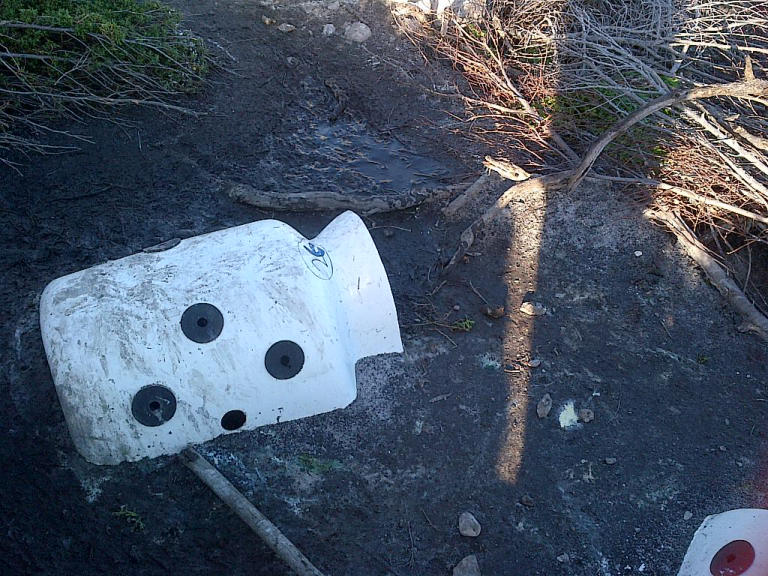
Photo: Is this what a breeding sanctuary looks like? Also watch the video below:
https://web.facebook.com/mosselbayontheline/videos/2094650150766241/
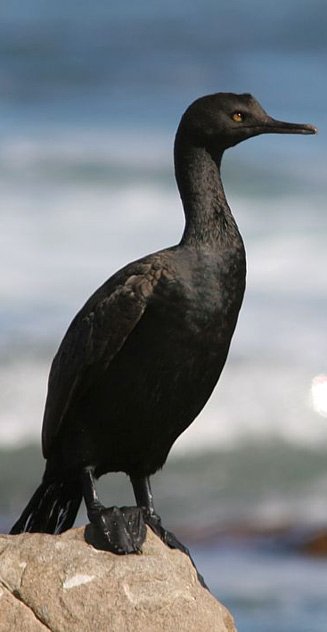 Despairing and dispirited Stony Point residents have now appealed to the Director-general of Environmental Affairs, Ms Nosipho Nqcaba, in a desperate attempt to get help.
Despairing and dispirited Stony Point residents have now appealed to the Director-general of Environmental Affairs, Ms Nosipho Nqcaba, in a desperate attempt to get help.
“Cape Nature does not deal with the Penguin and Cormorant guano and feathers which is blown by the wind and sea breezes onto and into the adjoining property owners’ residences, creating a poisonous dust which can lead to various illnesses. Please look at a 2016 study done on bird illnesses where 3 diseases are singled out as high risk for people living close to bird colonies. (The south African Sea Bird Colony Disease Risk Assessment from Sancob December 2016)
(b) Conditions exists that are conducive and contributively to the spread of a contagious and communicable disease; ( see The South African Sea Bird Colony Disease Risk Assessment from Sancob December 2016)
(c) Organic matter and animal waste are being used or kept in a manner that attracts vermin or pests such as, but not limited to rats, mice, flies and mosquitoes;
The letter reads:
“Dear Ms Nqcaba
“We do not know where else to turn. Please see attached report, especially pages 9, 10 and 11 pinpointing 3 high risk zoonotic potential diseases. We have confirmation that this was established based on samples tested from Stony Point Bird Sanctuary. The study was done 2 years ago. The number of birds has since doubled and therefore also the danger and risks to human health.
SOUTH AFRICAN BILL OF RIGHTS
Section 24 of our rights are been infringed:
24: Everyone has the right –
(a) to an environment that is not harmful to their health or wellbeing; and
(b) to have the environment protected, for the benefit of present and future generations, through reasonable legislative and other measures that –
(1) prevent pollution and ecological degradation
(2) promote conservation; and
(3) secure ecologically sustainable development and use of natural resources while promoting justifiable economic and social development
infringed by: Cape Nature (Stony Point Sea bird Colony)
Overstrand Municipality
Overberg Municipality
We have over a period of 2 years approached all three parties directly ( through meetings and correspondence) as well as indirectly through our Ward Councillor to no avail. We pay rates and taxes to Overstrand Municipality and consider them as the main responsible party. They point the finger at Cape Nature who gives written undertakings but never carry it out. Overstrand also points the finger at the Overberg municipality in terms of health issues who maintains there is none with no proof that they actually investigated and or tested. According to the Senior Health Inspector somebody must first fall ill and be able to proof the illness was caused by the overcrowding and resulting mess in the sea bird colony before they will act.
They are also transgressing The National Environmental Management Protected Areas Act 57 of 2003 by not actively allowing PAAC meetings. Only had two during 2017. The meetings are senseless as the minutes are incorrect and nothing is done about what is discussed. The minutes has not changed since August 2015. A total of 7 meetings with nothing changing.
The 3 Parties also transgress NEMA – National Environmental Management Act of 1998 and the Municipal Systems Act 32 of 2000.
Overberg Municipality is also not applying their own Municipal Health By-Law of 2015. Two Attorneys, Mr JP Joubert of Somerset West and Mr André Du Toit of Kleinmond confirmed in writing that this By-Law is applicable to Cape Nature and their Stony Point Bird Colony. In terms of this By-Law a Health Nuisance exists where:
(a) An accumulation of waste or other matter which is detrimental or dangerous to health occurs;
Cape Nature does not deal with the Penguin and Cormorant guano and feathers which is blown by the wind and sea breezes onto and into the adjoining property owners residences creating a poisonous dust which can lead to various illnesses Please look at a 2016 study done on bird illnesses where 3 diseases are singled out as high risk for people living close to bird colonies. (The south African Sea Bird Colony Disease Risk Assessment from Sancob December 2016)
(b) Conditions exists that are conducive and contributively to the spread of a contagious and communicable disease;(see The South African Sea Bird Colony Disease Risk Assessment from Sancob December 2016)
(c) Organic matter and animal waste are being used or kept in a manner that attracts vermin or pests such as, but not limited to rats, mice lies and mosquitoes;
(d) A carcass or the remains of an animal, poultry bird or marine- or aquatic fauna, or any animal waste remains unburied or is not suitably disposed of immediately after death;
(e) An obnoxious smell, pests, vermin vector, from whatever source emanate from land or premises and
A sprayer system is in place which would to a large extent eliminate the dust but is not being used thereby also causing the flora to disappear creating more dust. The numbers of Penguins and Cormorants are also not controlled which escalates the problem significantly. Cape Nature has in writing informed us that they will restore the habitat of Stony Point. This was written February 2017 but to date nothing has been done.
All of the above health nuisances specified in the 2015 Overstrand Health By-Law exists on Stony Point and nothing is been done to alleviate them.
Herewith an extract out of one letter we received from a permanent home owner:
Linda and Mike Tannett Erf 2398 Stony Point Bettys Bay. This pretty much sums up the experience and feelings of most permanent residents and holiday and weekend visitors. Dated 16/01/2018.
“We certainly have great worries re all the birds in front of our home.
Whilst they were breeding the flies were impossible to cope with. One could swot about six at a time with a fly swatter. I have these sticky strips hanging on the ceiling and they fill up every week and have to be replaced.
We even resorted to closing all the windows and running a fan for circulation.
The Stench is overpowering when the conditions blow it our way.
I did show a Cape Nature lady a fly trap I had outside. It was chock a block with flies after one week hanging outside my kitchen. Her response was that she didn’t ask the birds to be there.
Breathing in this foul air has caused us much distress and I am certain it certainly isn’t a healthy environment to be in.
To end with, what has the value of our properties dropped by. Everyone is gossiping about Stony Point and the awful situation we are all in.
PLEASE PLEASE can the birds be encouraged to go to a less inhabited area?”
We trust you can help address this problem or else tell us who to speak with.
Best regards
Stony Point residents”
Here is the Southern African Seabird Colony Disease Risk Assessment Report:
https://email.mweb.co.za/service/home/~/?auth=co&loc=en_US&id=82310&part=2
Another correspondence from Sony Point residents sent to Cape Nature, awaiting response:
“In the meantime we managed to get most of our questions answered by other individuals who were involved in the study.
As four, (4) Cape Nature officials were “especially” acknowledged for their participation in the study, (completed December 2016) – (Page 18):
• Why was the study never brought to our attention? (We “stumbled” upon it on Google.)
• As Cape Nature was involved in the study, why did you ask for the item “Health Issues” to be removed/ changed on the Agenda of the PAAC at the 15 August 2017 meeting?
• We note your participation at the : 3rd International Congress on PARASITES OF WILDLIFE Kruger National Park South Africa 24 – 27 September 2017, and we quote:
“(0096) Ectoparasite infestations in the nests of African penguins: initial data on the effect of nest type, spatial position of nest and season Marcela Espinaze1 , Cang Hui2 , Lauren Waller3,4, Cuan McGeorge4 ,
And also: “ ………………………….However, the importance of parasites in nest abandonment by adult penguins can only be confirmed with additional research.”
The importance of diseases transferred by insects between bird species and diseases transferred between bird species per se, are recognised.
• Seeing the tremendous growth of the bird numbers at Stony Point, the Zoonotic potential – (how significant is the pathogen or disease to human health?) in terms of the 3 diseases, (page 10) – marked as “ high” potential, – concerns us far more!
• At the next PAAC we will request that the Health Issue be re-instated on the Agenda. We will also ask that the Study be brought to the attention of all of the PAAC representatives with specific reference to pages 9,10,11 and regarding the management guidelines, – page 14. Some guidelines of which we already have suggested as solutions over the past couple of years!”
Kind regards
Stony Residents
Meanwhile, and despite the residents’ ongoing plight, this rosy picture of a well-maintained seabird sanctuary is what uninformed tourists and visitors see when they GOOGLE Stony Point:
Stony Point Nature Reserve
Stony Point Nature Reserve is home to one of the largest successful breeding colonies of African Penguin in the world.
Located in the quaint coastal town of Betty’s Bay in the Overberg, the Stony Point Nature Reserve is home to a unique colony of African Penguins. Stony Point offers the public the chance to see these wonderful flightless birds up close, via the boardwalk through the colony, which allows the public to observe the penguins go about their daily activities in their natural habitat, without disturbing or disrupting them.
Also present in the colony are three species of cormorant; the Crowned cormorant, Cape cormorant and Bank cormorant, all of which breed on the outer rocks. There are also Hartlaub’s Gulls and Kelp Gulls which forage in the colony, while the Rock Hyrax, more commonly known as the Dassie, can be seen on the surrounding rocks.
The colony lies on the site of the old Waaygat Whaling Station, which was used to harvest and process whale meat in the early to mid 1900s. Remnants of the machinery and infrastructure for this long-defunct industry can still be found at the site.
There is also a community restaurant adjacent to Stony Point, which sells refreshments and food during the day.
Stony Point Nature Reserve conservation
This unique mainland seabird breeding colony is the home to three endangered seabird species and one rarity, all of whom are visible from the reserve’s elevated viewing boardwalk.
The iconic black and white African penguin is the focus of conservation efforts. Our hardy endemic arrived from declining off-shore island colonies to this rocky mainland location in 1982 and has thrived ever since to currently support the largest penguin colony in the Western Cape with over 2 000 seasoned breeding pairs (data correct as of 2014).
The uniformed black Bank cormorant pairs, with courting white rumps, predominate at the rocky outcrops of Beacon Bay in Stony Point. The clumsy Cape cormorant roosting numbers are increasing at this location due to their symbiotic foraging relationship they share with the deep diving penguin and other neighborly marine predators. Finally, our rarity at this unique location is the Crowned cormorant whose pairing numbers are also increasing. They too brood alongside the Bank cormorant and also predominate the rocky out crops of Beacon Bay. Their tea-pot form, crest of plumage and ruby colored eye amongst the black and turquoise of the larger Bank cormorant requires a keen eye to note.
